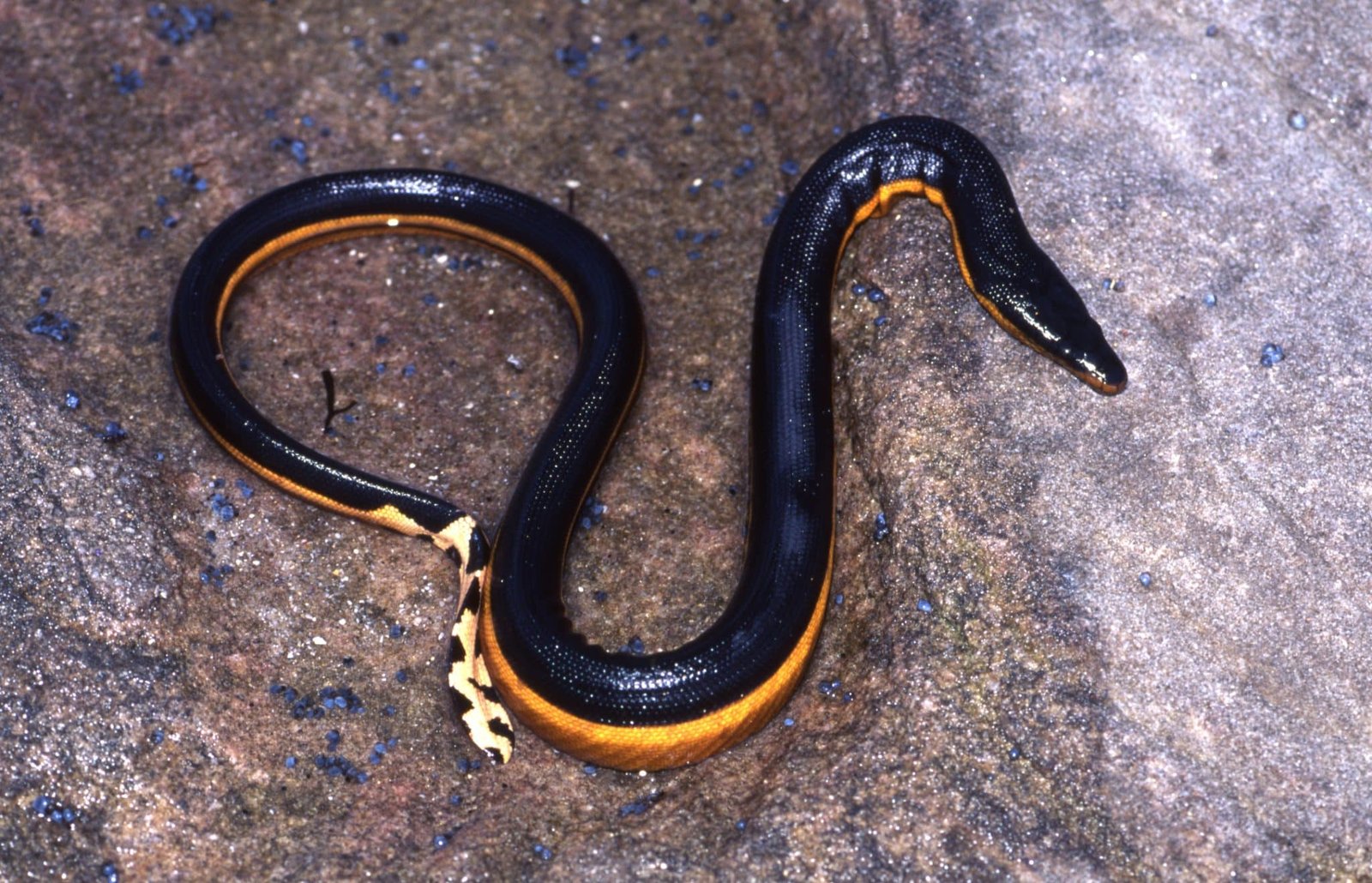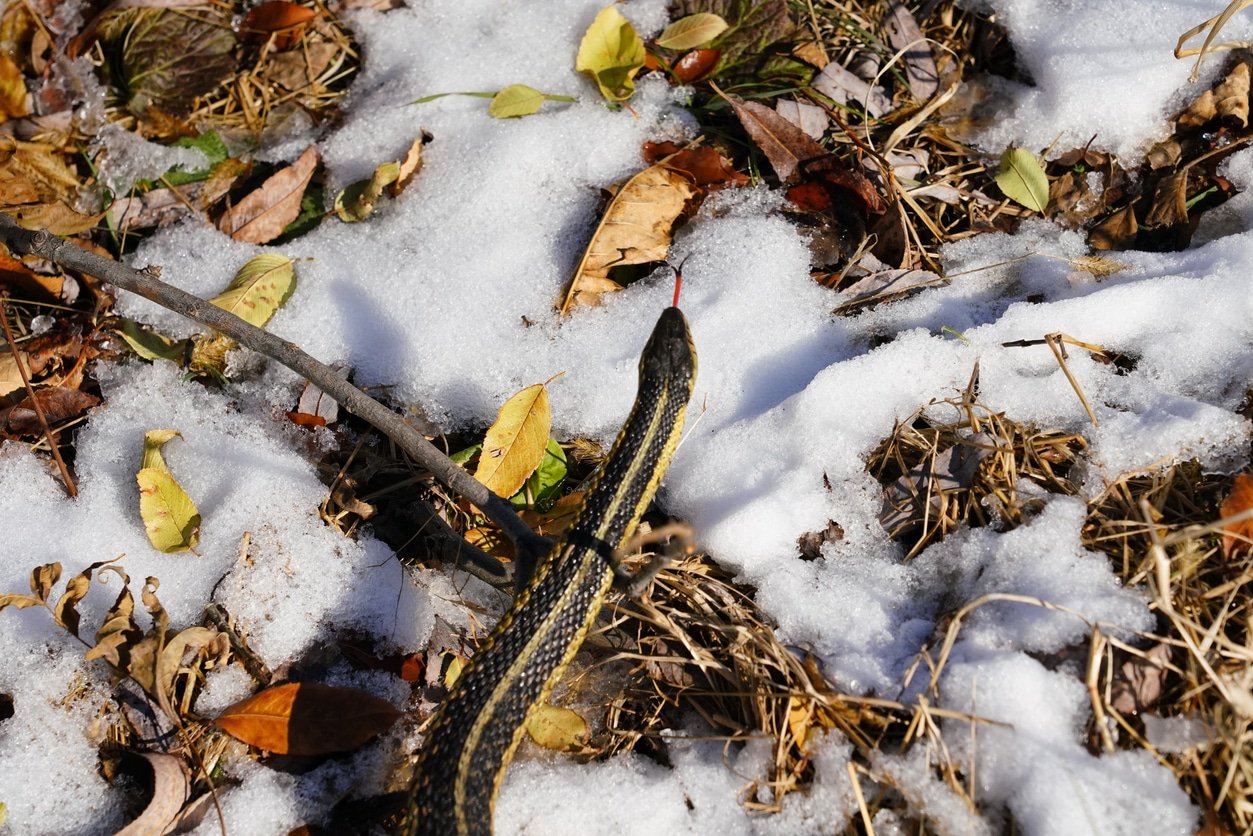You Will Find Snakes In Hawaii, But There’s No Need To Worry!
|
Prefer listening over reading? We got you covered!
Getting your Trinity Audio player ready...
|
Hawaii is famous for its exceptional surfing spots, volcanic landscape, tropical weather and unique wildlife. And in recent years it’s also become somewhat famous for claims that USA’s 50th state has no snakes. An apparent big plus for traveling snake-o-phobes who aren’t a fan of the slithering kind.
That’s what many people believed anyway.
However Hawaii’s claim to fame as a no-snake state has definitely come to an end.
There are small blind snakes on the island, as well as Brown Tree Snakes, and the venomous Yellow-bellied Sea Snake which is dangerous to humans.
Here we’ll explain everything about these snakes, where they are found (so you can avoid or find them!), what you should do if you see one, as well as detail the other rarer snakes that have been spotted on Hawaii. We then look at other creepy crawlies you might want to be aware of too.

The Snake Species You Could See On Your Hawaii Vacation
There’s been sightings of a few different species of snake in Hawaii during recent years, mainly due to invasive species taking foothold on the island.
The three most common snakes in Hawaii are now the Brahminy Blind Snake, Brown Tree Snake and Yellow-bellied Sea Snake. Thankfully sightings are not common, and tend to be concentrated in Oahu.
There’s more good news too. Brahminy Blind Snakes (Ramphotyphlops Bhaminus) are tiny and measure just 5-10 cm in length and actually resemble earthworms.
This invasive snake species lives in the soil and is believed to have been imported by accident in potting plant soil in the 1980s.
They feed on insects like termites, larvae, and ants, and while there are often sightings of them, these snakes are of no concern to humans. Although if you don’t like snakes you will probably still want to avoid meeting these little critters.
Brown Tree Snakes (Boiga Irregularis) on the other hand can reach around 2m in length, and are a constrictor snake species that tends to live in trees.
These snakes are highly detrimental to Hawaii’s wildlife, and the Hawaii Department of Agriculture has been making big efforts in recent years to try and get rid of this invasive species.
The Yellow-bellied Sea Snake – which has been spotted in Hawaiian water before – isn’t an invasive species and is found in tropical oceans around the world. It’s actually the planet’s most prolific sea snake and is extremely venomous.
Thankfully no fatal incidents have been reported in Hawaii, and this snake – which has a brown top body and a yellow belly – is very rarely spotted on the islands. Reports of people suffering its potent neurotoxic bites are even rarer.
On top of these three species, there have been other snakes spotted in Hawaii in recent years, all down to the pet trade.
The Hawaiian news has recorded python, rainbow boa constrictor, corn snakes and gopher snakes all caught on the islands, but again these sightings are rather rare.
In fact having a pet snake in Hawaii is illegal and if found by the police, an owner can face a maximum jail sentence of three years as well as fines of up to $200,000.
Despite that, people still take the risk and import them, and authorities have caught an average of 4-5 pet snakes per year across the last two decades.

Do these snakes attack?
Typically no. However, bites have happened in the past. Brown Tree Snake venom tends to be pretty insignificant for adults, but can be more serious for children.
The Yellow-bellied Sea Snake is extremely venomous. If you’re bitten by a snake, seek medical attention.
Where can they be found in Hawaii?
Most sightings of Brown Tree Snakes have been concentrated around the Oahu region. However you’ll be happy to hear that according to hawaii.gov, there have been less than ten sightings of Brown Tree Snakes since 1981.
Brahminy Blind Snakes can be found island-wide, but pose no risk to humans. They’re often spotted in gardens, but may actually do more good than harm as they eat invasive insect species.
The Yellow-bellied Sea Snake can be found in tropical waters around the world. However sightings in Hawaii are very rare.
What do you do if you find one?
If you find a snake in Hawaii then leave it alone. You can report a sighting to the state’s PEST HOTLINE at 643-PEST (7378).

Snakes In Hawaii: Summing Up
Although in general Hawaii is pretty much a no-snake island, reports have shown that there are some snakes here, the most common being the harmless Brahminy Blind Snakes.
Other species include Brown Tree Snakes and the Yellow-bellied Sea Snake, both of which have venom, but they are rarely spotted in Hawaii.
Most sightings have occurred in Oahu, so it may be worth keeping an eye out when in the region. However most Oahu locals will go their whole lives without seeing a Brown Tree Snake or Yellow-bellied Sea Snake.
If you’re not a fan of snakes, that’s not a reason to stay away from Hawaii. The likelihood of coming across a snake here is incredibly rare, while the experiences you will have by visiting this stunning island are second to none.
What About Other Creepy-Crawlies?
You can find three types of centipede in Hawaii, and although two of them are harmless, the red-headed centipede (Scolopendra Subspinipes) can reach up to 12 inches in length and its bite can cause excruciating pain that can last for weeks.
Red velvet ants, also known as “Cow killer” ants, are another venomous insect to watch out for as the sting of female red velvet ants are very painful.
Although the males are pretty harmless, keep an eye out for females with their distinctive features such as dense hair and ack of wings.
The venomous stonefish and the cone snail have been spotted in Hawaii, but rarely. The good news is that according to the Maui Ocean Center, there hasn’t been any recorded deaths linked to these two sea creatures.
Are There Any Dangerous Spiders in Hawaii?
There’s a common saying that all spiders are venomous, but not all are poisonous.
With that being the case there are three spider species to watch out for in Hawaii – the Western and Southern Black Widow Spiders and the Brown Widow. We’ve written about spiders in Hawaii before, and recommend you read that article before your trip.
These species have venomous bites and can be dangerous. Brown Widows inject less venom than the Black Widow, but it’s twice as potent.
The distinctive feature of the female Black Widow is a red hourglass shape, and compared to the male, the female is double the size, carries a highly toxic venom and will attack to defend its web.











